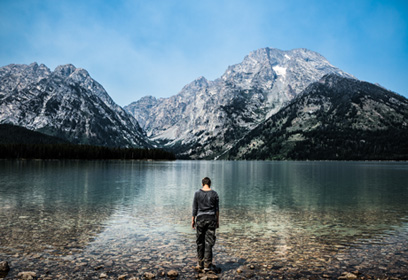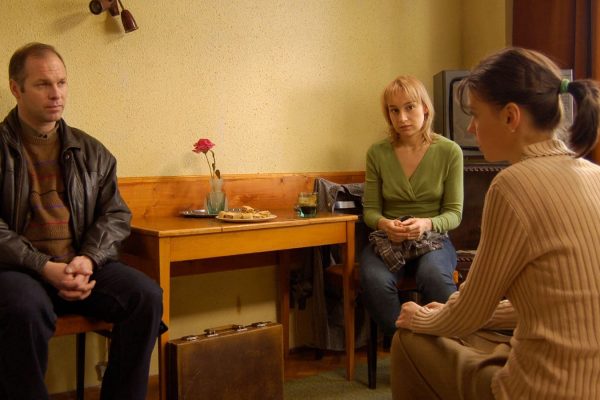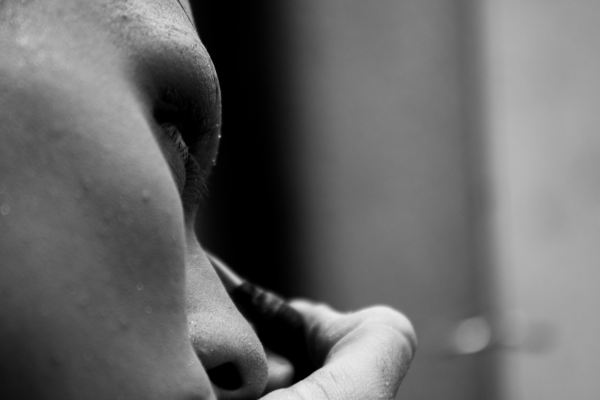Before I put my things in storage, gave up my apartment, and headed off with one small suitcase for two years of travel that I would, of course, be turning into a book, two friends separately but within a few days of each other gave me the same piece of advice: “Just don’t be Elizabeth Gilbert.”
It is a risk, becoming Elizabeth Gilbert. Not the international fame and money and showing up inexplicably and briefly on Project Runway All Stars. I mean being an obnoxious white lady in brown places. After all, I am (vaguely) middle class, equally blonde-haired and blue-eyed, and come from a nation with imperialistic aims.
The critique of Gilbert emerged after the publication of her massive bestseller Eat, Pray, Love (2006). She may travel to India, but she remains tucked away in an ashram, conversing almost exclusively with westerners, more interested in relaying the details of her recent breakup than noticing anything about her host country. From there, she goes to Bali and tries to rescue a poor Balinese woman by raising money to buy her a house, and then criticizes that same woman for not playing along. It gives a person the icks, and it unconsciously echoes so much literature written by missionaries, here on this island to save the savages if only they would allow it. What she is doing is not strictly travel writing—it has more in common with memoir.
Gilbert has inspired a whole niche of faux travel writing by women, from Cheryl Strayed’s bestselling Wild (2012) to more moderate offerings by Elisabeth Eaves and Kristin Newman. In this genre, the focus of attention is the self, and the beautiful locale becomes the backdrop of the real action, which is interior psychodrama.
These writers position themselves against the iconic travel writer who is, of course, male. From Sir Richard Francis Burton to Bruce Chatwin to Paul Theroux, the traveler is an essentially masculine force, driven by the need to conquer, to experience life at its extremes, but most of all to explain. This travel writer not only goes off to see what he can see but also becomes a kind of expert witness who explains the natives to interested parties at home. That most of these writers, the polyglot Burton aside, did not speak the language, only spent a few weeks in their chosen locations, and came with a colonialist’s baggage stuffed full with preconceived assumptions did not make their audiences any less credulous about their authority.
Traditional travel writing surely needed to be infiltrated and broken apart, its masculine tropes challenged. But the popular female travel narrative has overcorrected in a serious way; these writers are experts only on their own selves. Strayed complained in an interview with New York magazine that the typical male writer of her subgenre, nature writing, was “this educated white guy” with an “intellectual, dry way of writing about the natural world” without “anything about the interior life.” In Wild, however, one rarely gets any description of the world around her. She includes next to nothing of the Pacific Crest Trail’s natural history or ecology.
The way we deny people’s humanity might change over time, but it has the same result.
The authors of these narratives talk a lot about how they shouldn’t be on the road because good girls stay at home. Explaining why she was leaving her marriage to travel, Gilbert writes, “Until I can feel as ecstatic about having a baby as I felt about going to New Zealand to search for a giant squid, I cannot have a baby.” Here, the act of travel itself is so subversive to gender norms that the destination almost doesn’t matter. This absolves the writer of responsibility for her choices—where she goes, what she does there, or how she writes about it. Much emphasis is put on how “authentic” their lives are, hence the self-congratulatory title of Newman’s collection of travel writing,What I Was Doing While You Were Breeding (2014). But these books are not so much transgressive as regressive. After all, they obey their gender codes: men go on adventures, women on journeys of self-discovery.
I knew I shouldn’t be Elizabeth Gilbert, but I worried I would have to be Bruce Chatwin. The myth of the male travel writer looms large, eclipsing what we know: that women have always been travel writers and not necessarily like Gilbert. Women travel writers such as Freya Stark copy the male template in both travel and writing style. That the market has not sustained their work may have more to do with our expectations as readers than with any faults of their writing. We still look to men to tell us about what they do and to women to tell us how they feel. Certainly Chatwin’s In Patagonia (1977) drips with emotion, but it is the rugged, daring doing—and the icon of the outsider and misfit—that drives both the narrative and continued interest in the writer and the story.
Chatwin finds his origins in the likes of Burton, the nineteenth-century British explorer and writer who was always getting into scrapes—starting African tribal conflicts, taking a spear through the face—but also wrote movingly on the emotional aspect of his travels. His passage explaining that he cries every time he departs on a journey, that he must hide his face whenever his ship leaves shore, is memorable. But the frame differs for travel writers in the masculine mode. The story is built of action; feeling is a kind of decorative embroidery. Burton’s story still compels, and his legend endures. Yet his contemporary and fellow Briton Isabella Bird, who enjoyed great popularity in her time, does not. Why?
“Legend” is perhaps key, as more readers seem to know about him than read his work. Burton was the first white European man to enter Mecca (in disguise) and report back. Another expedition saw him seeking out the source of the Nile. His work can be exhausting to read, as he did not seem to know when to stop writing. Almost every trip he took resulted in a multi-volume account.
In contrast, Bird was simply writing to her sister with observations from the American West, Japan, and China. Those letters were then fashioned into books. There are elegant, striking passages, but little about her emotional state. Bird was a Victorian lady; one look at her portrait—tightly wound with hat, scarf, petticoats, corset, and scowl—and you know this is not a woman deeply in touch with her feelings.
There is not much pleasure in reading either of them today. Nineteenth-century travel writing carries a bad stink of colonialism; its tendency is to present the wilds of the earth as an entertainment and to focus on the madness of the uncivilized. Many of these accounts show the inhabitants of exotic lands in need of a steady British hand or American Christianity to bring them into true humanity. Bird was a product of her era and did not seem to possess an untimely wealth of perspective and compassion. It can be difficult to read her without cringing at proclamations about the strange habits of the “orientals” in Japan or the “irredeemable ugliness of the Tibetans.”
But while Burton’s legacy remains alive and well, Bird—a woman, a spinster, traveling the world and getting paid for it—is merely a historical oddity. If she is written about at all, what gets mentioned is her trip up a HawaiÊ»i volcano, where she insisted on riding a standard saddle rather than side-saddle. That makes her more of an adorable feminist anachronism than an adventurer. We can be grateful that she exists, but that won’t make us feel like we have to read her books.
That leads to an interesting question: Is it the book itself or instead the author’s pose that matters in travel writing? So many of the writers, or the ideas of them, outshine their work. And when women are still burdened—by publishers, by men, by each other—with doing things as women rather than as people, it can be difficult to find a new maneuver.
I wonder if it is a trade-off. If the larger-than-life adventurer is, in readers’ minds, the immovable province of men, why wouldn’t women writers play into expectations rather than deal with the obscurity that comes from playing in the big boys’ shadows? Certainly a few brilliant travel books break through, such as Katherine Boo’s National Book Award–winning Behind the Beautiful Forevers (2012), which worked in neither the masculine nor feminine mode exclusively but rather blended them to great effect. But Boo’s influence has not proven as contagious as Gilbert’s. And even if you know the male travel writers were not the men their legends would have you believe, it can be difficult to negotiate a way around them. Our gender can become a quick marketing hook, a way to move our work away from the towering male influence. But it also sequesters us. If I couldn’t be Chatwin or Gilbert, who could I be?
Stark, who died in 1993 at a hundred years old, was more an heir to Burton than Bird, traveling into remote regions of Iran before any other westerner dared and working as a spy during World War II. She had some of her compatriots’ unfortunate colonialist tendencies, as she seemed to truly believe the British Empire brought stability and civility to the world. But on the whole, her fluency in the languages of the Middle East and her ability to see the Arabs as people and not curiosities brings to her writing a compassion missing from Bird’s. That compassion resists both the notion that the people you meet would be happier if they were more like you and the modern impulse to turn these people into daemons helping you on your journey toward enlightenment. The way we deny other people’s humanity might change over time, but it has the same result.
There is something a bit old-fashioned in Stark’s point of view, compared to the more personal takes of her friend Lawrence Durrell or other women travel writers of the time, such as Ella K. Maillart and Annemarie Schwarzenbach. Maillart traveled because she was trying to understand something in herself; Stark traveled because she was trying to understand something in the world. There is a strong intelligence at work, always trying to fit what she is seeing and experiencing into a historical and political context. She is primarily an observer. Like Burton, she worked for the government, and both read as though filing reports for the home office.
Stark was in the world with her writing, not above it like Bird, not in herself like Gilbert. Her books are in the process of being reissued by the publisher I.B. Tauris, and putting aside the great charm and energy they possess, one can still see why interest in her work might be growing. Her great geographical loves included what are now Lebanon, Turkey, Afghanistan, and Iran, and while she did dip occasionally into a “the Empire is here to help” tone, she had a remarkable understanding of the region, with its shifting populations and its strong tribal cultures. She remembered to talk to women, not just men. Her writing restores humanity to people who have otherwise been stripped down to news reports, reduced to death tolls and photos of open-mouthed weeping. The secret to her success was listening to the people she visited and letting them tell the story.
This shouldn’t be any secret. It should be what every travel writer does. But, as many have observed, the purpose of travel writing has changed as travel itself has changed and become more accessible. Listening is less important when readers no longer rely on written accounts to transport them vicariously to places they would never have the opportunity to see for themselves. Today’s writing is more aspirational. The travel writer sells not only lovely prose and insights into a new land but also the lifestyle of the rootless and adventurous. Yet, when you establish your life and yourself as goals to aspire to, you take yourself out of the world. Every interaction is sculpted for its eventual presentation, and the aim of every presentation is to show how wonderful your life is. Since we seem these days to judge the best life not as one marked by compassion and connection but as a sensual experience of exotic foods, insider knowledge, and Instagram-able landscapes, everything that doesn’t incite the envy of the writer’s followers gets cut out. If your life is an aspiration, you are a beacon, not a human, and you talk rather than listen.
The prolific Irish writer Dervla Murphy started her career off like Bird, posting easygoing narratives about the interesting things she saw while riding her bicycle to India. But now she works more like Stark, in the listening mode. The shift started with her book about Northern Ireland, A Place Apart (1978). She insists it is not a political work, that the politics of the Six Counties are too complicated for her to fully understand. Indeed, there are no sweeping generalizations or proclamations as one would expect from a political work. Instead there is great empathy as she talks to all sides, from the pacifists to the preachers who advocate violence, and she argues with each of them.
It seems that after A Place Apart, Murphy realized she is capable of having thoughts and opinions about politics and history—and that she is allowed to voice them in print. Her subsequent work is bolder. She travels to the Balkans after the war for Through the Embers of Chaos (2002), to Cuba for The Island that Dared (2008), and to Palestine for her latest book, Between River and Sea (2015). She does not hold back, and she does not become the expert; she reports. She is confident in her research, and she allows people to tell their stories. She is engaged with the world, and while she doesn’t drift into the background as much as Stark does, she at no point betrays the belief that she is the most interesting person in the room.
In contrast to Eat, Pray, Love and Wild, though, don’t expect Murphy’s books to get the major-motion-picture treatment anytime soon. Any travel writer who deviates from gender-defined roles risks being overlooked. And that is a shame because we do not need men to explain the world’s far-off reaches to us anymore. It turns out the inhabitants of the far-off reaches have voices of their own. Nor do we still need women to tell us it is fine to set up a life outside of marriage and family. What we do need are more writers willing to break free of travel writing’s colonialist tendencies, whether expressed as contempt for backward others or admiration for their “authenticity” and guidance. On the other side of this dehumanization are compassion and the will to listen.






